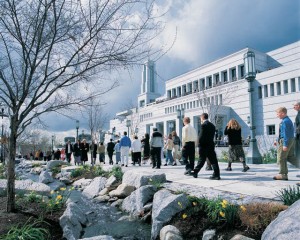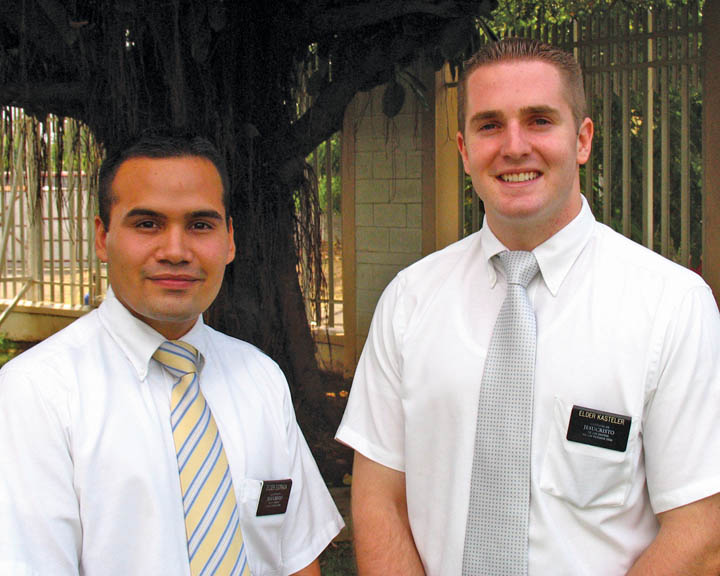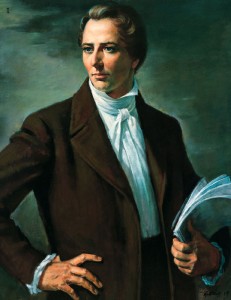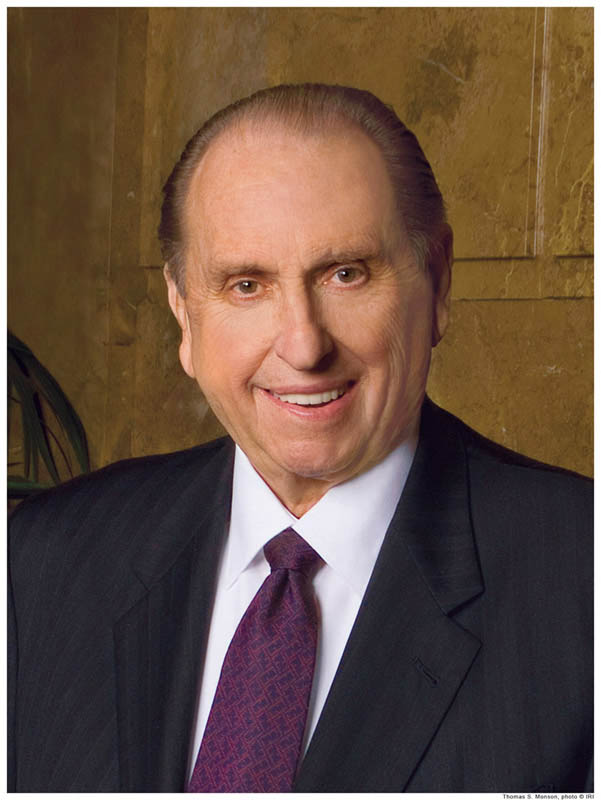Contemporary Developments (1990–Present)
The Church of Jesus Christ of Latter-day Saints (often misnamed the “Mormon Church”) began the 1990s with 7,700,000 members, more than 15,000 congregations, and 50,000 missionaries worldwide. The 1990s proved to be the period of most explosive growth in the history of Mormonism worldwide up to that time, as the Church expanded significantly into Africa and the former Soviet Union, where it had hitherto been relatively small. Some began calling the “Mormon Church” the fastest-growing church in the world, though that applies only to growth in terms of internal percentage, not sheer numerical growth, and even percentage growth rate is contested. Nevertheless, the claims of Mormonism to truth and priesthood authority from God are not proven by the Church’s rapid growth. Book of Mormon prophets predicted that in the last days, the Lord’s Church would be small, even though membership would be found worldwide.
Growth and Expansion
 In late 1990, the USSR granted permission for The Church of Jesus Christ of Latter-day Saints (“Mormon Church”) to establish congregations in Russia, and it did so in Stalingrad (St. Petersburg) that year. To facilitate the ever-expanding missionary program, the Church created the General Missionary Fund, which allowed members to donate easily for the support of missionaries, and also made it easier for missionaries from poor areas to afford a mission. In 1991, the Church ordained its 500,000th missionary since 1830 and opened up the work in Armenia and Ukraine. Mormons in Tonga celebrated the 150th anniversary of the Church there.
In late 1990, the USSR granted permission for The Church of Jesus Christ of Latter-day Saints (“Mormon Church”) to establish congregations in Russia, and it did so in Stalingrad (St. Petersburg) that year. To facilitate the ever-expanding missionary program, the Church created the General Missionary Fund, which allowed members to donate easily for the support of missionaries, and also made it easier for missionaries from poor areas to afford a mission. In 1991, the Church ordained its 500,000th missionary since 1830 and opened up the work in Armenia and Ukraine. Mormons in Tonga celebrated the 150th anniversary of the Church there.
This was also a time of great building expansion. Mormon temples were begun in Spain, Hong Kong, and a second temple in England was announced. The Church also began using general tithing funds to build chapels, instead of having each congregation finance their own. This allowed the Church to save millions of dollars per year by re-using floor plans and standardizing construction. The 1990s saw the greatest era of Church construction around the world. By the end of the decade more than 300 chapels were built per year.
Throughout his tenure, Mormon Church President Ezra Taft Benson had called for members to lengthen their stride and step up the missionary work of the Church. He called for members to “flood the earth” with the Book of Mormon, which they did. During the 1980s and 1990s, an average of 250,000 people a year joined the Mormon Church, equivalent to the entire membership of the Church in 1900. President Benson died in early 1994 and was succeeded by Howard W. Hunter. Though elderly, President Hunter was known for his powerful testimony of Jesus Christ, and his appeal for all members to prepare themselves to enter a Mormon temple soon. He also oversaw the creation of the 2000th stake in the Church, which was in Mexico City, Mexico.
President Hunter died nine months later and was succeeded by Gordon B. Hinckley on March 12, 1995. President Hinckley immediately met with members of the press, a habit that came to distinguish him as President of the Church. He was interviewed on Larry King Live and 60 Minutes, as well as by numerous other reporters around the world. He and the other Mormon Apostles also issued The Family: A Proclamation to the World, which defends the traditional family against the growing attacks it has faced in popular culture.
Early in 1996, the “Mormon Church” reached a point in its growth where more Latter-day Saints lived outside the United States than within. In May, President Hinckley dedicated a temple in Hong Kong. By 1997, the Church reached 10,000,000 members, with more than 100,000 in West Africa alone, and nearly 3,000,000 in South America. President Hinckley oversaw an explosion in temple building with two new temples in West Africa, and dozens in Europe and South America.
Growth necessitated that in 1997, President Hinckley organized the third, fourth and fifth, quorums of the Seventy which oversee Church operations in various regions of the world and pull their leadership from the local members. As President Hinckley pondered the growth of the Church, he received a revelation that even more temples were to be built, but these were to be smaller than previous Mormon temples. These smaller temples would be faster to build and less expensive, allowing the opportunity for temple worship and covenant making to become more available to members around the world. He said that by the end of the year 2000 the Church, which had just over 50 temples in 1997, would have 100 in operation. Mormon temples began to be built all over the world: in the Hague, Netherlands; Helsinki Finland; Kiev, Ukraine; another in Africa; and dozens more in South America and North America. The first of these mini-temples was dedicated in Monticello, a rural community in Utah. While smaller, these temples are built to high standards of quality and beauty. The 100th temple was dedicated in Boston, Massachusetts, on October 1, 2000. Thirty-four temples were dedicated in 2000 alone, approximately 3 per month.
Each year of the first decade of the twenty-first century saw new countries being opened up for missionary work. In 2002, the first chapels were built in Serbia, the Republic of Georgia, and India. A Missionary Training Center was built in Africa. In 2003, the Church helped fund and supply schools in Ghana where many thousands had joined the Church. In November of 2003, the government of Brazil gave an award to The Church of Jesus Christ of Latter-day Saints (“Mormon Church”) for its humanitarian aid to that country, which had nearly 1,000,000 Latter-day Saints (“Mormons”) at the time. The Church also started vaccination projects in Africa which have vaccinated nearly 1,000,000 children a year against malaria. Good press in Africa allowed the Church to open up in Benin, and in 2003 the Church started mass producing Atmit, a thick, nutritional porridge made of oats, to distribute in Africa. The Church even cooperated with Islamic relief agencies to produce Islamically pure food (Hallal) to distribute in Muslim countries like Afghanistan and Iraq.
The Church of Jesus Christ of Latter-day Saints has continued building more temples. As of July 2012, there were 138 operational temples worldwide with 14 under construction and 14 more having been announced. Church membership surpassed 14,000,000 in December 2011. Changes to the missionary program in the 1990s and early 2000s encouraged young men and women to be better prepared for missionary service. The Church also encourages retired couples to serve as missionaries, and in June 2011 made changes which make it easier for senior couples to serve. Senior couples may serve proselytizing missions, humanitarian missions, health and education missions, or leadership missions where they teach and train local members. While in the past, senior couples had to commit to 18 months of service, they now have the option of serving 6, 12, 18, or 23 months.
 In March of 2001, President Hinckley announced the creation of the Perpetual Education Fund, modeled on the Perpetual Emigration Fund of the early Church. This program provides money for young Mormons in poor countries (especially those who have served missions for the Church) to help them obtain education. By the end of 2004, over 10,000 individuals had been given money for school in 23 countries, mostly in South America, and plans were made to expand the fund to Africa and Asia beginning in 2006. After participants gain and education and gainful employment, they pay back the money they used, so that someone else can benefit.
In March of 2001, President Hinckley announced the creation of the Perpetual Education Fund, modeled on the Perpetual Emigration Fund of the early Church. This program provides money for young Mormons in poor countries (especially those who have served missions for the Church) to help them obtain education. By the end of 2004, over 10,000 individuals had been given money for school in 23 countries, mostly in South America, and plans were made to expand the fund to Africa and Asia beginning in 2006. After participants gain and education and gainful employment, they pay back the money they used, so that someone else can benefit.
Change, Challenges, and Tradition
The Mormon doctrine of continuing revelation means that while doctrine remains the same, God will, from time to time, reveal changes to be made in the operation of the Church. These changes are inspired guidance to help the Church fulfill its mission to take the Gospel to the world. The explosive growth of the 1990s brought many such changes, but the 1990s also represented a time during which Mormons reflected and celebrated their common heritage. Although most Mormons today likely do not have Mormon pioneer heritage, the spiritual heritage is shared by all.
Beginning in the 1990s, the Church produced computer programs to assist in Genealogy and Family History research. Mormons believe they must search out their ancestors and perform vicarious ordinances for the salvation of the dead, such as baptism for the dead. Later in the decade the Church launched its website Family Search and has continually expanded online resources to help all people, not just Mormons, find out who their ancestors were. In 2012, the Church revamped its family search site and consolidated many of its genealogy programs into one database, NewFamilySearch. This database and the Church’s records are available to the public, regardless of religion, free of charge.
 The 1990s and 2000s also saw many historical commemorations. In 1992, the Relief Society celebrated its 150th anniversary. In 1994, the Family History department celebrated its centennial. In 1996 and 1997, worldwide celebrations, commemorations, and reenactments of the Mormon pioneer trek from Illinois to Utah took place in honor the trek’s 150th anniversary. In June 1996, a commemorative reenactment began in Nauvoo, Illinois. In 1997, Mormon congregations all over the world held mini-treks to commemorate it as well. European Mormons launched Sea Trek 2001 to commemorate the emigration of Mormons to America in the nineteenth century. The United States honored the Mormon pioneers with an exhibit in the Smithsonian, and PBS produced multiple documentaries on Joseph Smith and the Mormon Trek. The Church produced a movie called Legacy which told the story of the early Church. The state of Illinois in 2005 issued an official apology for the expulsion of the Saints and the murder of Joseph and Hyrum Smith. Missouri had issued an apology in 1976. In 2000, Legacy was replaced with The Testaments of One Fold and One Shepherd in the Legacy Theater on Temple Square in Salt Lake City. This film told the story of Jesus Christ visiting the Americas after His death and resurrection. In 2005, The Testaments was replaced by Joseph Smith: The Prophet of the Restoration, which tells how Joseph Smith was inspired and led by God to restore the fulness of the gospel of Jesus Christ to the earth in 1830.
The 1990s and 2000s also saw many historical commemorations. In 1992, the Relief Society celebrated its 150th anniversary. In 1994, the Family History department celebrated its centennial. In 1996 and 1997, worldwide celebrations, commemorations, and reenactments of the Mormon pioneer trek from Illinois to Utah took place in honor the trek’s 150th anniversary. In June 1996, a commemorative reenactment began in Nauvoo, Illinois. In 1997, Mormon congregations all over the world held mini-treks to commemorate it as well. European Mormons launched Sea Trek 2001 to commemorate the emigration of Mormons to America in the nineteenth century. The United States honored the Mormon pioneers with an exhibit in the Smithsonian, and PBS produced multiple documentaries on Joseph Smith and the Mormon Trek. The Church produced a movie called Legacy which told the story of the early Church. The state of Illinois in 2005 issued an official apology for the expulsion of the Saints and the murder of Joseph and Hyrum Smith. Missouri had issued an apology in 1976. In 2000, Legacy was replaced with The Testaments of One Fold and One Shepherd in the Legacy Theater on Temple Square in Salt Lake City. This film told the story of Jesus Christ visiting the Americas after His death and resurrection. In 2005, The Testaments was replaced by Joseph Smith: The Prophet of the Restoration, which tells how Joseph Smith was inspired and led by God to restore the fulness of the gospel of Jesus Christ to the earth in 1830.
In 2000, the Mormon Church started rebuilding the Nauvoo Temple and dedicated it on June 27, 2002. Also in 2000, the Church held special meetings to commemorate 2000 years since the birth of Jesus Christ. In January of that year the First Presidency and the Quorum of the Twelve Apostles issued The Living Christ as their witness to the world about Jesus as our Savior. In 2005, the Church held celebrations to honor the bicentennial of Joseph Smith’s birth.
The Church has also been active in promoting various causes over the last few decades. They have campaigned for the family and have sent representatives to worldwide conferences on the family. The Church has opposed measures that would alter the definition of a family (see Same-sex attraction). They have also promoted measures and programs countering drugs, gambling, and pornography.
The Church of Jesus Christ of Latter-day Saints and the Future
 While he recognizes the challenges and difficulties of our world, President Thomas S. Monson has emphasized an optimistic message of hope through the grace and atonement of Jesus Christ. He has taught that The Church of Jesus Christ of Latter-day Saints (“Mormon Church”) will continue to grow and be strengthened around the world. The Church continues its missionary program and will seek to take its message of the reality of God, the redemptive mission of Jesus Christ, and the transformative power of the Gospel to the whole world. The Church of Jesus Christ of Latter-day Saints always enters a country legally and sends not only proselyting missionaries, but also humanitarian missionaries to bless all of God’s children. Church officials continue to work with governments everywhere to allow the gospel to enter and be preached to God’s children.
While he recognizes the challenges and difficulties of our world, President Thomas S. Monson has emphasized an optimistic message of hope through the grace and atonement of Jesus Christ. He has taught that The Church of Jesus Christ of Latter-day Saints (“Mormon Church”) will continue to grow and be strengthened around the world. The Church continues its missionary program and will seek to take its message of the reality of God, the redemptive mission of Jesus Christ, and the transformative power of the Gospel to the whole world. The Church of Jesus Christ of Latter-day Saints always enters a country legally and sends not only proselyting missionaries, but also humanitarian missionaries to bless all of God’s children. Church officials continue to work with governments everywhere to allow the gospel to enter and be preached to God’s children.
The Church is currently growing quickly in South America, Africa, and Asia. In 2011, Slovenia celebrated having the Church in its country for 20 years (see LDS Newsroom for more information). In 2002, the Church assigned some of its apostles to live permanently abroad, in the Philippines and Chile for now, so that the leaders could be closer to where members live. Greater authority has been given to local leaders to carry the work forward guided by teachings, but free to act as they feel inspired to, to best serve their own areas. The Church still faces challenges, though not generally from official persecution against the whole Church, but more from individuals. These new challenges seek to erode the Church by attacking members individually, but the Church nevertheless goes forward and continues to grow. The new challenges are challenges of explosive growth and secularism, but Latter-day Saints (“Mormons”) are optimistic that they will meet these challenges successfully just as their spiritual ancestors met the physical challenges of their day.

 Watch a video about the restoration of the gospel on lds.org
Watch a video about the restoration of the gospel on lds.org